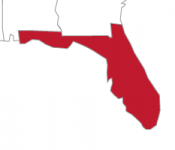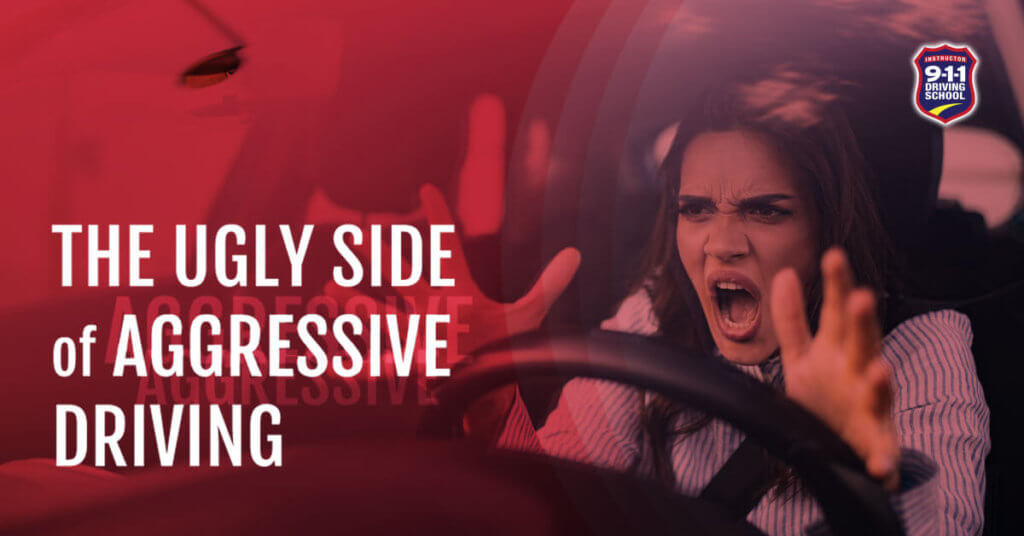Just about everyone has experienced irritation and anger while driving. After a rushed morning or driving home after a long and tiring day, these emotions are even quicker to appear. All it takes is another driver cutting you off, not letting you merge, or just sitting in slow-moving traffic. However, reacting angrily toward another driver in any way is aggressive driving.
The Devil in the Details
Aggressive driving can include a range of reactions from subtle, deliberate acts to full blown episodes of “road rage”. It is also very common. In a 2016 survey done by the AAA Foundation for Traffic Safety, nearly 80% of drivers said they often feel angry and show aggressive behaviors while driving. When asked what behaviors they show, here are the most common responses:
- Tailgating intentionally (51% or 104 million drivers)
- Yelling at other drivers (47% or 95 millions drivers)
- Honking or somehow show their annoyance or anger (45% or 91 million drivers)
- Making angry gestures (33% or 67 million drivers)
- Attempt to block another vehicle from changing lanes (24% or 49 million drivers)
Several of these behaviors can get you a ticket if seen by a police officer, but that isn’t the most concerning part of aggressive driving. Each act can take a situation that likely started off small and then escalates it to more serious behaviors. The news commonly has stories of people who are injured in or out of their vehicle because of something that happened on the road then escalated. This is why 90% of the drivers responded that they felt aggressive drivers were a serious threat to personal safety.
Sometimes aggressive actions are subtle and drivers don’t even realize they are doing them, such as:
- Driving too fast
- Racing through a red light
- Tailgating
- Refusing to let others merge
These small acts of aggression still have the same effect of causing bad feelings and escalating situations that were already intense.
The Consequences of Aggression
As mentioned previously, traffic tickets and fees are a common consequence to aggressive driving. These tickets can be costly themselves, but some car insurance companies can increase your rates or refuse to continue coverage once the policy is up for renewal.
Another common cost is vehicle damage, to your car or the other car involved. These costs add up quickly. In the case of a broken headlight, taillight, or other lost essential function, the vehicle can’t be driven until the repair is done. This could mean paying for other forms of transportation or losing time and convenience.
Of course, the most terrifying consequences that come from aggressive driving are serious injury and death. It is impossible to tell what type of person you are engaging with if you get involved in a road rage incident. Some people will stop at nothing until they get revenge. In the wide scheme of things, it’s too bad that such serious consequences happen over small, unimportant driving actions.
Fixing Aggressive Habits
Many drivers make a commitment to being more kind on the road but quickly revert into their old habits. Instead of just saying they’re going to be calmer, here are three tricks to helping yourself calm down behind the wheel.
- Assume the Best. If you knew the person who cut you off was a new driver in training or was someone racing to the hospital, would you be as angry? Too many times, assumptions are made that other drivers are doing things on purpose, just to be mean. In reality, most driving actions that start road rage incidents start off with an innocent mistake. Practice not overreacting and realizing that not everyone is out to ruin your drive.
- Avoid Conflict. Keep a watchful eye out for other drivers showing aggressive behaviors. If someone is driving too close to you, being aggressive, or trying to get you to react, don’t engage. Avoid eye contact and pretend you don’t see them. Leave yourself room around your vehicle so you can switch lanes, if necessary.
- Focus on Breathing. If someone does something on the road to make you angry, take a few breaths before reacting. This will give you just enough time to calm down and not give room to your emotions. It often only takes a couple of breaths to regain composure and move on.
Staying Safe
The most important thing to remember is that you are trying to get yourself and any passengers in your car to a destination safely. There is nothing more important than driving safely. If someone cuts you off in traffic or fails to let you merge, it doesn’t require aggressive driving on your end. If another driver is getting aggressive with you and you can’t get away from them, call the police.






